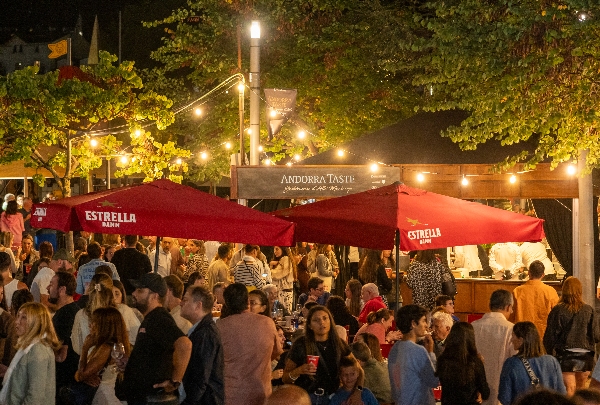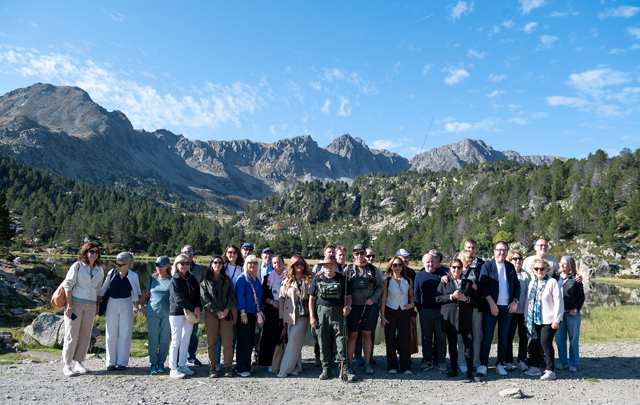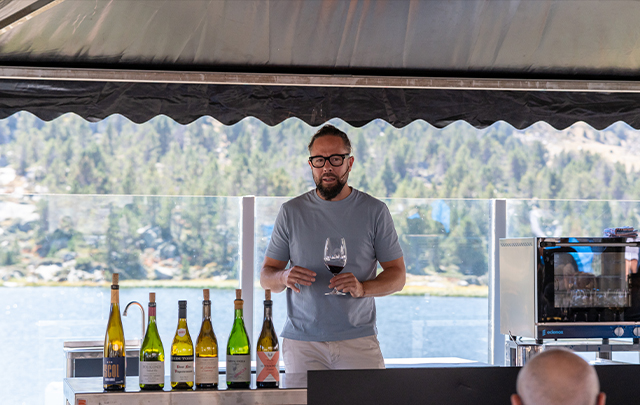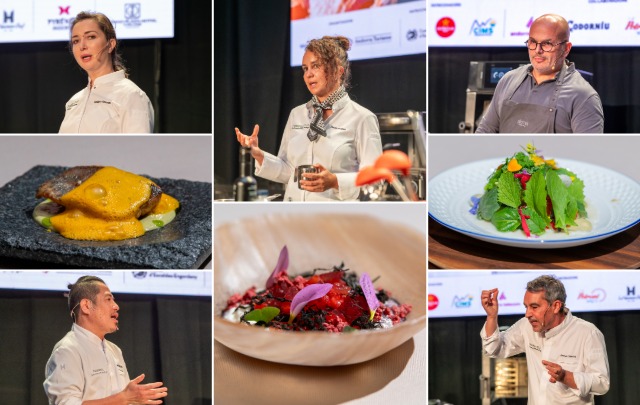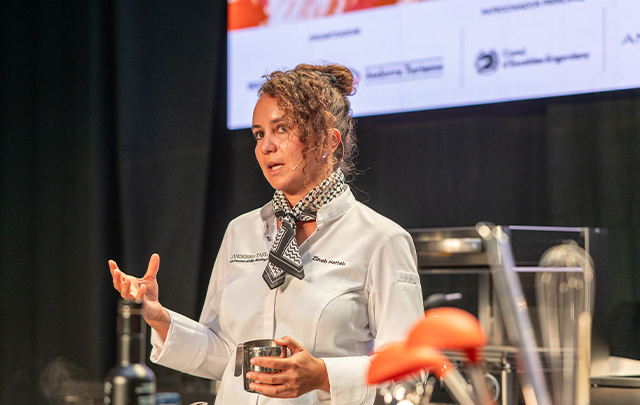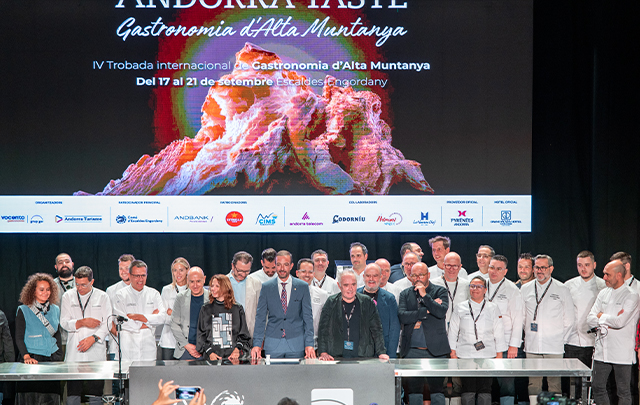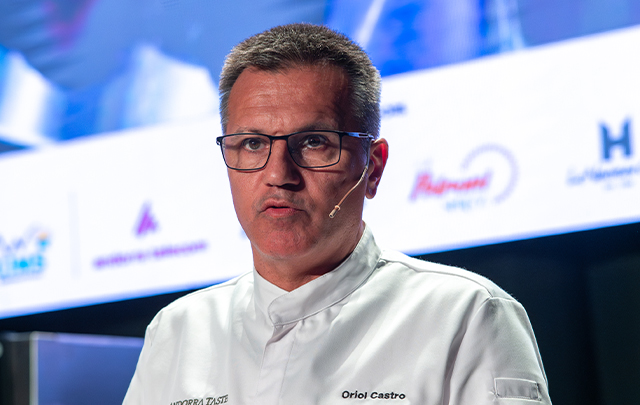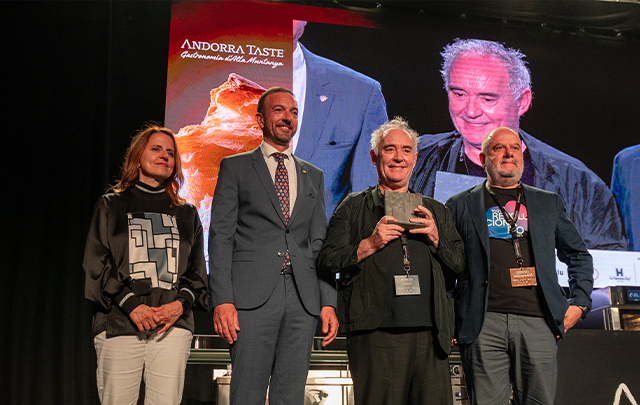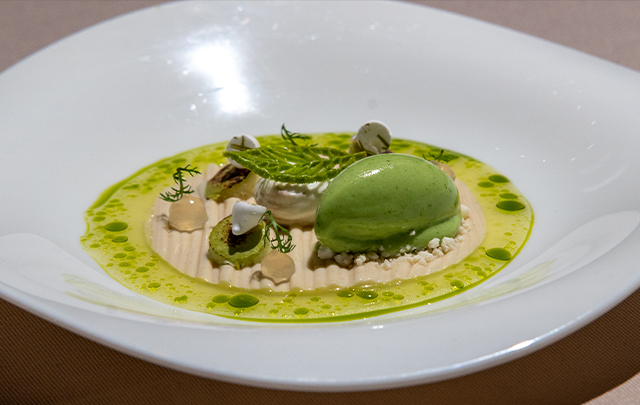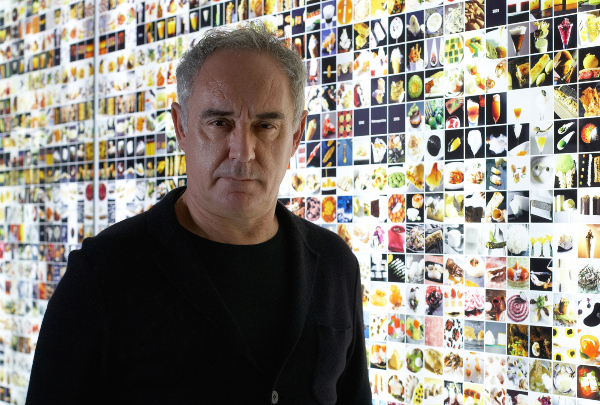News
Slovenian chef Uroš Štefelin demonstrates how gastronomy can be used to build a community
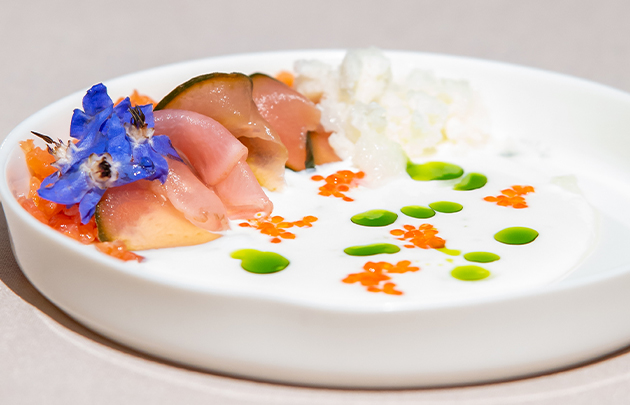
From cooking classes and recipe revival to innovation with producers, cooperation between restaurants and employee care, the Hiša Linhart restaurant is the heart of Radovljica
But can a restaurant really function as the heart of a community, promoting inclusion, innovation, commitment and prosperity? The Hiša Linhart restaurant is proof that it can. By forming alliances with local businesses and collaborating with them, the restaurant has become the driving force and glue of Radovljica, a town in the Julian Alps, Slovenia. Its achievements go far beyond the Michelin and Green Stars it boasts. “We have managed to make a beautiful medieval village, which was off the tourist trail 15 years ago, attract attention and become famous for its products, all thanks to gastronomy and teamwork,” explained Marcela Klofutar, partner of chef Uroš Štefelin, who accompanied her on stage at Andorra Taste.
Ms Klofutar began by congratulating the conference organisers and Andorra. “If you continue to do a good job over the next four or five years, Andorra will undoubtedly become a leading gastronomic destination in the high mountains,” she ventured. In Radovljica's case, a village of 6,000 inhabitants in the Slovenian Alps, the driving force behind the transformation has been a restaurant, owned by Uroš Štefelin, capable of revitalising an entire community.
“We believe that restaurants have the power to maintain and develop the communities of the future. We usually talk about sustainability in exclusively environmental terms, but social and cultural sustainability is important too. If you establish strong connections with the environment, the community will be strengthened and able to continue existing into the future,” he said.
Uroš and Marcela began with the most immediate issue: suppliers. We realised that it was not enough to establish a loyal purchasing relationship, but that we could contribute to the innovation and improvement of those products. So we started meeting with them. Uroš suggested that the trout supplier start packaging caviar. He helped them with the technical side of things, and their caviar is now a well-known regional product. It also enables us to organise events where we invite trout producers to extract the roe in front of customers and offer them samples. It's unique," he said. Another initiative was setting up a market for local producers and artisans in front of the restaurant. “When we have a large group that requests it, we organise a market day with live cooking,” he explained. At this and other events and on themed days and menus, they collaborate closely with the association of local restaurateurs that they set up. “We stopped seeing other restaurants as competitors and realised that together, we were creating a destination.”
In the case of Hiša Linhart, community involvement began with the restaurant's own employees. “We wanted them to stay with us. We realised that we had to look after them by offering good working hours and salaries, as well as encouraging them to visit Michelin-starred restaurants or giving them vouchers for fitness or massages,” said Marcela Klofutar. She added that both Hiša Linhart and the other restaurants in the village employ people with special needs. Hiša Linhart's cuisine is based entirely on local produce and traditional recipes. To preserve these recipes, they have established a partnership with the village's senior citizens' centre. 'They give us their recipes. For me, passing on knowledge by word of mouth is much better than passing it on through reading. It's the best way to understand and preserve flavours," said the chef. The elderly people in the village have helped us a lot with developing our menus," said the chef.
They haven't forgotten their neighbours either. “We organise days specifically for local people so they come to the restaurant. As we were concerned they would ask for children's menus, we set up a cooking school where we teach traditional recipes. "If they've cooked it, they'll eat it," said Marcela.
Integration, mutual support, cultural preservation and ensuring that ownership of the village's houses and assets remains with the residents are some of the practices that have made the Hiša Linhart restaurant a place where an exciting future for Radovljica is being created, as well as delicious dishes.


